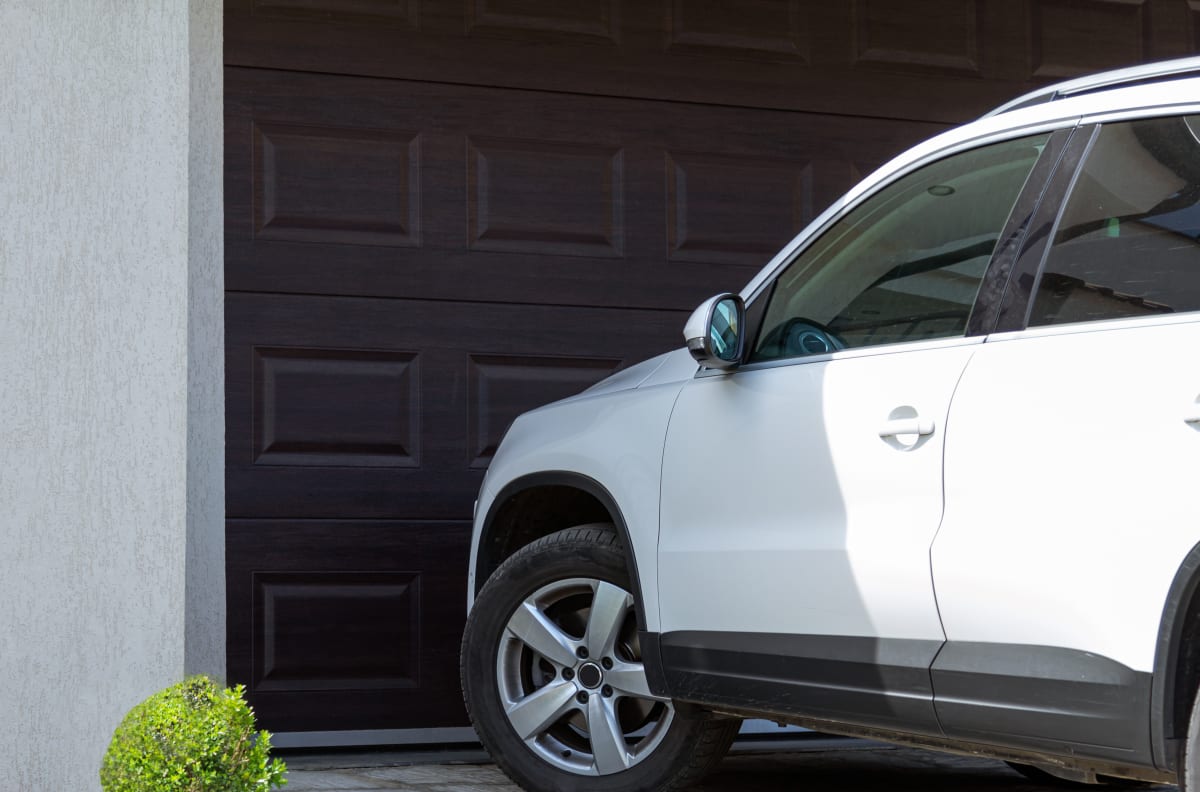Checking the tread on your car's tyres is a crucial part of vehicle maintenance that often gets overlooked. Tyre tread is not just about performance; it's vital for safety, affecting how well your car grips the road, especially in wet conditions. Without enough tread on illegal tyres, your vehicle may not handle as expected, increasing the risk of accidents. In this guide, we'll walk you through the simple steps to check your tyre tread, helping you ensure that your car remains safe and roadworthy. With just a few minutes of your time, you can gain peace of mind knowing that your tyres are in good shape.
Understanding Tyre Tread
Importance of Tyre Tread
Tyre tread plays a critical role in vehicle safety and performance. The tread provides the necessary traction between the road and your vehicle, ensuring control during various driving conditions. In wet weather, adequate tread depth helps channel water away from the tyre, reducing the risk of aquaplaning. This means your car can maintain better contact with the road surface, which is crucial for braking and steering effectively. Moreover, tyre tread influences fuel efficiency. Properly treaded tyres can offer better fuel economy as they reduce rolling resistance. Driving with inadequate tread isn't just dangerous; it could also be illegal. In the UK, the legal minimum tread depth is 1.6mm across the central three-quarters of the tyre. Regularly checking your tyre for tread level ensures you meet legal requirements and safeguard yourself and other road users. Take the time to understand the importance of tyre tread for a safer driving experience.
Legal Requirements in the UK
In the UK, tyre tread depth is governed by strict legal requirements to ensure road safety. The law mandates that tyres must have a minimum tread depth of 1.6mm across the central three-quarters of the tyre and around its entire circumference. These regulations apply to cars, light vans, and light trailers. Failing to comply with these requirements can lead to significant penalties. Drivers caught with tyres remaining tread well below the legal limit risk a fine of up to £2,500 and three penalty points per tyre, which can quickly add up. Beyond the legal ramifications, maintaining the correct tread depth is vital for safety. Tyres with sufficient tread provide better grip, especially in adverse weather conditions, which reduces the risk of accidents. Regularly inspecting your tyre tread depth and replacing tyres when they near the legal limit is not only a legal obligation but also a crucial aspect of responsible vehicle ownership.
Consequences of Worn Tyres
Worn tyres can have serious implications for both safety and performance. As tread depth decreases, so does the tyre's ability to effectively grip the road. This reduced traction can lead to longer stopping distances, especially in wet conditions, heightening the risk of collisions. Moreover, worn tyres are more susceptible to aquaplaning, where water builds up under the tyre and causes the vehicle to lose contact with the road surface. This can result in a complete loss of control. Driving on wet roads with worn tyres also increases the likelihood of tyre blowouts, which can be dangerous, particularly at high speeds. Aside from safety concerns, worn tyres can affect fuel efficiency, as they may cause increased rolling resistance. Regularly checking tread depth and replacing tyres when necessary is essential to avoid these risks. Ensuring your tyres are in good condition helps protect you, your passengers, and other road users, while also maintaining optimal vehicle performance.
Methods to Check Tyre Tread
The 20p Coin Test
The 20p coin test is a simple, quick method to check if your tyre tread meets the legal requirements in the UK. It requires nothing more than a 20p coin and can be done in a matter of minutes. To perform the test, insert the 20p coin into the tread grooves of your tyre. If the outer band of the coin is obscured by the tread, your tyres are likely above the legal minimum depth of 1.6mm. However, if you can see any part of the coin's outer band, your check tyre tread depth may be too low, and it's advisable to have your tyres checked by a professional. This test should be done around the entire circumference of the tyre, as wear can be uneven. Regularly using the 20p coin test can help you monitor your tyre tread and ensure your vehicle remains safe and compliant with legal standards.
Using a Tread Depth Gauge
A tread depth gauge is an accurate tool designed specifically for measuring tyre tread depth. Using this device provides a precise reading, helping you ensure that your tyres are within the legal limits and safe for use. To measure your tyre tread with a gauge, insert the probe into individual tyre groove or the tread groove at several points across the tyre to check for uneven wear. Press the gauge's base against the tyre surface until the probe stops, then read the measurement displayed. For consistent safety, the reading should be above 1.6mm. Tread depth gauges are easy to use and widely available at automotive stores or online. They provide a reliable way to monitor tyre wear over time and can help you decide when it's necessary to replace your tyres. Regularly using a tread depth gauge is a proactive step towards maintaining your vehicle's safety and optimising tyre performance.
Professional Inspection
While DIY methods can provide a good indication of tyre tread condition, a professional inspection offers a comprehensive assessment. Professional mechanics have the expertise and tools to identify issues that may not be immediately visible, such as uneven wear patterns that might indicate problems with wheel alignment or suspension. During an inspection, a mechanic will not only measure the tread depth but also show how to check tyre tread for any signs of damage, such as cuts, punctures, or bulges that could compromise tyre integrity. They can also offer advice on tyre maintenance and recommend replacement if necessary. Regular professional inspections, ideally at least once a year or whenever you're unsure about your tyres' condition, are an essential part of vehicle upkeep. This approach ensures that you not only adhere to legal requirements but also maintain optimal safety standards for your vehicle. A professional's keen eye can contribute significantly to your peace of mind while driving.
Signs of Tyre Wear
Uneven Wear Patterns
Uneven tyre wear is a common issue that can indicate underlying problems with your vehicle. It occurs when certain areas of the tyre tread wear down faster than others, potentially compromising safety and performance. Common causes of uneven wear include improper wheel alignment, unbalanced tyres, or suspension issues. For instance, if the inner or outer edges of the tyre are wearing more quickly, it might suggest your wheels are misaligned. Similarly, more wear in raised areas in the centre compared to the edges could mean your tyres are overinflated. Uneven wear can lead to reduced traction and handling capabilities, increasing the risk of driving incidents. Regularly checking your tyres for uneven wear patterns can help catch these problems early. If you notice any unusual wear, it's crucial to have your vehicle inspected by a professional. Addressing the root cause not only prolongs tyre life but also enhances overall driving safety.
Cracks and Bulges
Cracks and bulges in tyres are tell-tale signs of wear and potential failure. Cracks often appear on the sidewall or tread and can result inevitably wear, from ageing, exposure to harsh weather conditions, or underinflation. These fissures weaken the tyre structure, making it more prone to blowouts. Bulges, on the other hand, occur when the tyre's internal structure is compromised, often due to impact damage like hitting a pothole or kerb. A bulge indicates that the tyre's inner layers have failed, and the air pressure is causing the weakened area to protrude. Both cracks and bulges present serious safety hazards, as they can lead to sudden tyre failure. Regularly inspecting your tyres for these signs can prevent accidents. If you spot any cracks or bulges, it's imperative to replace the affected tyre immediately. Prompt action not only enhances safety but also ensures your vehicle remains roadworthy and compliant with safety standards.
Reduced Traction
Reduced traction is a significant indicator of tyre wear that can affect your vehicle's handling and safety. As tyre tread wears down, its road decreases and its ability to grip the road diminishes, particularly in wet or slippery conditions. This loss of traction can lead to longer braking distances, making it harder to stop quickly in emergencies. Additionally, reduced traction can affect steering precision, increasing the likelihood of skidding or losing control, especially during sharp turns or sudden manoeuvres. Factors contributing to reduced traction include worn tread, incorrect tyre pressure, or even the type of tyre used. Regularly checking your tyres for adequate tread depth and maintaining proper inflation levels can help preserve traction. If you notice that your car feels less stable or responsive than usual, it may be time to inspect your tyres closely. Addressing traction issues promptly ensures that your vehicle remains safe and performs optimally in various driving conditions.

Maintaining Optimal Tyre Condition
Regular Tyre Rotation
Regular tyre rotation is a key practice in maintaining even tyre wear and extending the lifespan of your tyres. This process involves changing the position of each tyre on your vehicle, which helps distribute wear more evenly among all tyres. Front and rear tyres often wear differently due to variations in weight distribution, steering, and drive power. By rotating your tyres, you balance out these differences, ensuring that no single tyre wears out significantly faster than the others. Typically, tyre rotation should be done every 6,000 to 8,000 miles, though you should refer to your vehicle's manual for specific recommendations. Performing regular rotations can also improve vehicle handling and fuel efficiency. It’s a straightforward procedure that can be done during routine maintenance checks. Ensuring regular tyre rotation not only maximises safety but also saves money in the long run by delaying the need for replacement tyres.
Correct Inflation Levels
Maintaining the correct inflation levels in your tyres is crucial for safety, performance, and efficiency. Under-inflated tyres can lead to increased rolling resistance, which reduces fuel efficiency and can cause excess heat build-up low tyre tread, potentially leading to tyre failure. Conversely, over-inflated tyres can result in a harsher ride and uneven tread wear, as the contact patch with the road is reduced. Both scenarios compromise vehicle handling and braking. To ensure optimal tyre performance, check the tyre pressure regularly, ideally once a month and before long journeys. Use a reliable pressure gauge to measure the pressure when tyres are cold for accurate readings. The recommended pressure levels can usually be found in the vehicle's manual or on a sticker inside the driver's door frame. Adjust the pressure as needed to match these specifications. By keeping tyres correctly inflated, you enhance driving safety, improve fuel economy, and extend the life of your tyres.
Prompt Tyre Replacement
Prompt tyre replacement is essential for maintaining vehicle safety and performance. Tyres with worn tread, visible damage, or structural weaknesses pose significant risks, including reduced traction and increased likelihood of blowouts. When tread depth approaches the legal minimum of 1.6mm or higher risk if you notice signs of damage like cracks or bulges, it's time to replace the tyre. Delaying replacement can compromise your ability to handle the vehicle safely, especially in adverse weather conditions. New tyres ensure maximum traction, stability, and fuel efficiency. It's advisable to replace all tyres simultaneously, or at least in pairs on the same axle, to maintain balanced handling. Regularly inspect your tyres for wear and damage, and consult a professional if you're unsure about their condition. By addressing tyre issues promptly, you safeguard yourself and other road users, ensuring your vehicle remains in top condition and compliant with safety regulations.
Safety Tips for Tyre Care
Monitoring Tyre Pressure
Regularly monitoring tyre pressure is a simple yet crucial aspect of tyre maintenance that significantly impacts safety and efficiency. Tyres that are not inflated to the recommended pressure can affect vehicle handling, increase stopping distances, and lead to uneven tyre wear. Under-inflated tyres generate more heat and flexing, potentially causing a blowout. Over-inflated tyres can decrease the contact area with the road, reducing grip and causing a rougher ride. To ensure optimal tyre pressure, check it at least once a month and before long trips, using a reliable tyre pressure gauge. Make sure to check the pressure when the tyres are cold for the most accurate reading. The recommended pressure levels right tyres can usually be found in your vehicle’s manual or on a sticker inside the driver’s door. Keeping tyres at the correct pressure boosts fuel efficiency, extends tyre life, and enhances driver safety, providing peace of mind on your journeys.
Avoiding Road Hazards
Avoiding road hazards is essential for preserving tyre integrity and ensuring safety. Common hazards include potholes, debris, kerbs, and uneven road surfaces, all of which can cause significant damage to your tyres. Striking a pothole can lead to bulges or cracks in bald tyres, while debris can cause punctures. To minimise risk, remain vigilant and maintain a safe distance from the vehicle ahead, giving you more time to spot and avoid obstacles. Adjust your speed according to road conditions; slower speeds reduce impact force and potential damage. If avoiding a hazard is impossible, try to approach it straight on rather than swerving, as sharp manoeuvres can worsen tyre damage or lead to loss of control. Regularly inspect your tyres for signs of damage following encounters with road hazards. By remaining alert and practising defensive driving, you can protect your tyres from unnecessary wear and tear, ensuring a safer and more comfortable driving experience.
Safe Driving Practices
Adopting safe driving practices is an integral part of tyre care and overall vehicle safety. Gentle acceleration and braking help reduce tyre wear and maintain optimal traction. Abrupt stops and starts can increase tread wear and heat build-up, which may lead to tyre damage. Taking corners at moderate speeds also less tread wear indicators prevents excessive stress on the tyres' sidewalls. It's important to regularly adjust your driving style to suit the conditions. In wet or icy weather, increase your following distance and reduce speed to accommodate for reduced grip. Avoid overloading your vehicle, as excess weight puts additional pressure on the tyres, increasing the risk of blowouts. Routine checks for tyre pressure, alignment, and balance are essential, as they contribute to smoother rides and even tyre wear. By following these practices, you can extend the life of your tyres, enhance driving safety, and ensure a more pleasant driving experience.









